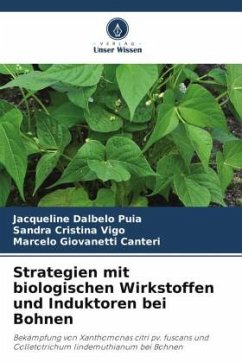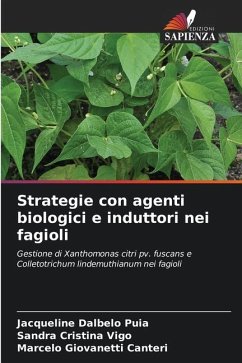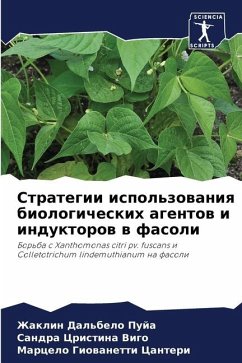
Strategies with Biological Agents and Inducers in Beans
Management of Xanthomonas citri pv. fuscans and Colletotrichum lindemuthianum in Beans
Versandkostenfrei!
Versandfertig in 6-10 Tagen
29,99 €
inkl. MwSt.

PAYBACK Punkte
15 °P sammeln!
The management of Xanthomonas citri pv. fuscans and Colletotrichum lindemuthianum in beans can be improved through the use of biological agents and resistance inducers. Biological agents include beneficial microorganisms such as Bacillus sp. and Trichoderma sp., which compete with the pathogens and produce antimicrobial substances. Mycorrhizae are also used to strengthen the plant's resistance. Resistance inducers, such as salicylic acid and elicitors, are used to activate the plant's defense mechanisms. Plant extracts, such as garlic, and biostimulant products also play a role. In addition, c...
The management of Xanthomonas citri pv. fuscans and Colletotrichum lindemuthianum in beans can be improved through the use of biological agents and resistance inducers. Biological agents include beneficial microorganisms such as Bacillus sp. and Trichoderma sp., which compete with the pathogens and produce antimicrobial substances. Mycorrhizae are also used to strengthen the plant's resistance. Resistance inducers, such as salicylic acid and elicitors, are used to activate the plant's defense mechanisms. Plant extracts, such as garlic, and biostimulant products also play a role. In addition, cultural management practices, such as crop rotation and proper spacing, are implemented to reduce pathogen pressure. The choice of resistant varieties and, in extreme cases, responsible chemical control, are additional considerations. The combination of various strategies is generally more effective, taking into account the specific growing conditions and the characteristics of the pathogensin the region.












